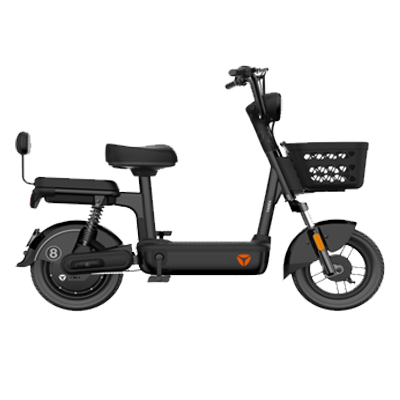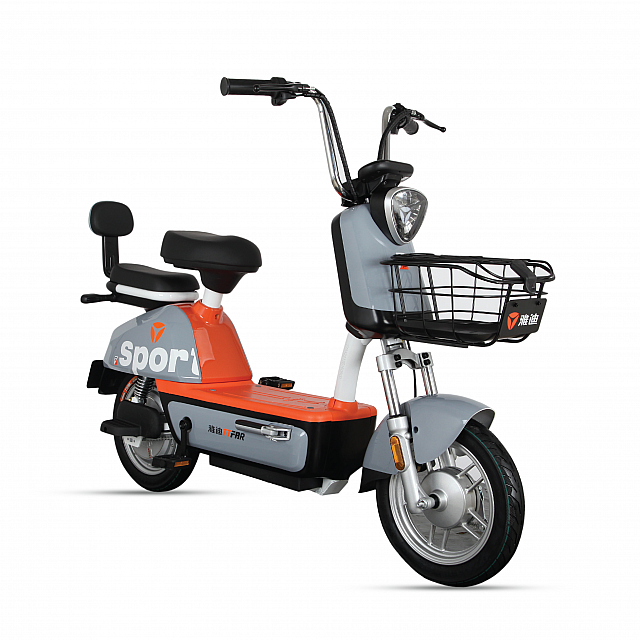The Metro LY Superbike was one of Metro E-Vehicles' attempts to introduce a compact, electric, and urban-friendly solution for Pakistani commuters. Launched as part of their green mobility initiative, the LY Superbike combined electric efficiency with a practical design targeted at short-distance urban users, students, and women riders.
The model was eventually discontinued due to limited public adoption, competition from more performance-oriented or fuel-based models, and a developing charging infrastructure that wasn't ready to support widespread EV use in Pakistan fully.
However, the LY Superbike still garners interest in the used bike market due to its affordability and low running costs.
Metro LY Superbike Specs
The Metro LY Superbike featured a brushless DC motor rated at 400W, offering a top speed of 35 km/h. It used a 48V 23Ah graphene battery, known for extended life and safety, delivering a driving range of 70 to 80 kilometers per charge. The bike's motor controller was a 12-tube unit, ensuring stable power output during acceleration. Its total length measured 1470 mm, with a width of 670 mm and a height of 1030 mm, making it highly compact for urban riding. The ground clearance was rated at 120 mm, allowing sufficient handling on local roads.
The braking system was equipped with drum brakes on both the front and rear, while the wheels were 14-inch aluminum alloy. It had hydraulic shock absorbers and 60/100 - 10 (3PR Tread) tires, contributing to comfort and durability.
On the electrical side, the LY featured an energy monitoring meter, and the graphene battery boasted 1,000 charging cycles, a non-flammable build, and an 18-month warranty.
The total power system was built for efficiency, safety, and low maintenance. The Metro LY was designed to meet essential city commute requirements with an eco-conscious powertrain.
Metro LY Superbike Design and Features
Regarding aesthetics, the Metro LY Superbike was a modern electric scooter with a practical and minimalistic frame. It was designed with a unisex appeal and catered primarily to urban commuters looking for affordability and ease of use.
The LY featured a comfortable two-seater layout with sturdy footrests and a spacious floorboard that could accommodate grocery bags, school backpacks, or briefcases. One of the standout visual elements was its bright and shining paint, manufactured using premium Swedish Berker technology. This paint was applied through a rigorous 9-step spray and grinding process, and it underwent an 800-hour Hernia lamp aging test to ensure long-lasting durability. The PU800 painting method guaranteed a brand-new appearance even after several years of use.
Its front basket and flat footboard added utility for everyday users, particularly women or older riders who needed a stable and lightweight vehicle for everyday errands. The body structure was sleek and lightweight, contributing to better battery efficiency. Underneath, it had a unique TTFAR graphene-based battery, developed specifically for electric scooters. This battery was non-flammable but also recyclable and cost-effective, promising a 1,000-charge lifespan. Additionally, the scooter came with an 18-month battery and motor warranty, highlighting the manufacturer's confidence in its quality.
The LY Superbike's dashboard included a digital energy monitoring meter to provide real-time battery levels and usage feedback. The handlebar setup was ergonomically positioned, offering intuitive control and comfort, even during longer rides. The LED lighting system and indicators provided visibility in traffic and at night. With a strong build, elegant paint finish, and a reliable braking system, the Metro LY was engineered to provide a safe and efficient urban riding experience.
Metro LY Superbike Fuel Average
Unlike fuel-powered motorcycles, the Metro LY Superbike relied entirely on its battery system. On a full charge, the 48V 23Ah graphene battery provided a travel range of approximately 70 to 80 kilometers. In real-world Pakistani conditions, considering road traffic, rider weight, and weather variations, users could generally expect an average of around 75 km per charge.
This performance made it ideal for intra-city commutes, especially for users traveling less than 30 km daily. It eliminated the need for fuel refills and significantly lowered running costs. The charging time for a complete battery cycle was typically around 5 to 6 hours using standard home electric sockets. The non-flammable and long-cycle graphene battery ensured daily users' safety and economic viability.
Maintenance and Care Tips for Metro LY Superbike
To maintain the bike in optimal condition, follow these maintenance tips:
-
Regularly check and clean the battery terminals to avoid power fluctuations.
-
Avoid overcharging the battery; unplug once fully charged to preserve battery health.
-
Store the scooter in a cool, dry place away from direct sunlight to maintain paint and battery quality.
-
Lubricate moving parts like the stand and levers monthly to ensure smooth operation.
-
Check tire pressure every week for safe handling and better range efficiency.
-
Inspect drum brakes periodically and adjust if the braking response feels loose.
-
Charge the battery every few days to prevent it from draining completely, even when not in use.
-
Ensure the energy monitoring meter is functional to track consumption patterns accurately.
Metro LY Superbike Competitors
The Metro LY Superbike primarily competed with other entry-level electric and small petrol-powered two-wheelers during its operational period. Notable competitors included the Yadea T5 and Yadea Spirit electric scooters, which offered similar speed and range capabilities with a more modern design language.
Although environmentally superior and with lower operational costs, the LY Superbike could not match the local market's robust ecosystem supporting petrol motorcycles. The limited number of service stations equipped to handle EVs, especially outside major cities, created hesitation among buyers, further widening the gap between electric and conventional bike sales in Pakistan.
Is Metro LY Superbike worth buying?
As of 2025, the Metro LY Superbike remains a practical second-hand option for individuals looking for a cost-effective electric vehicle strictly for city commuting. It is especially suitable for women, students, and elderly riders needing an affordable, safe, and low-maintenance ride for short distances.
The running costs are significantly lower than those of petrol bikes, and with a resale price often under PKR 112,500 in the second-hand market, it presents a budget-friendly choice for eco-conscious users.
That said, buyers must consider the current limitations of EV infrastructure, including charging availability and service centers. Spare parts may not be widely available, and with the model no longer in production, support may decline over time. However, the Metro LY is still a solid short-distance performer for users with predictable travel routes and access to home charging.
More






